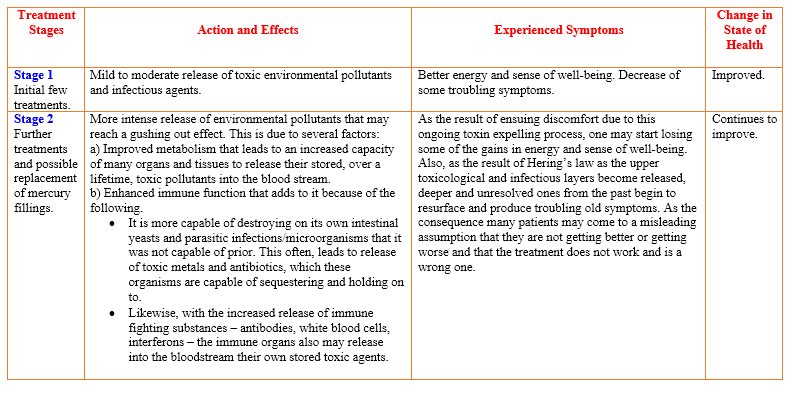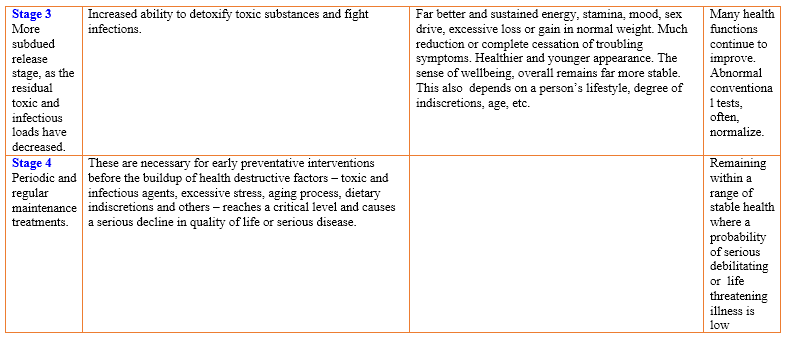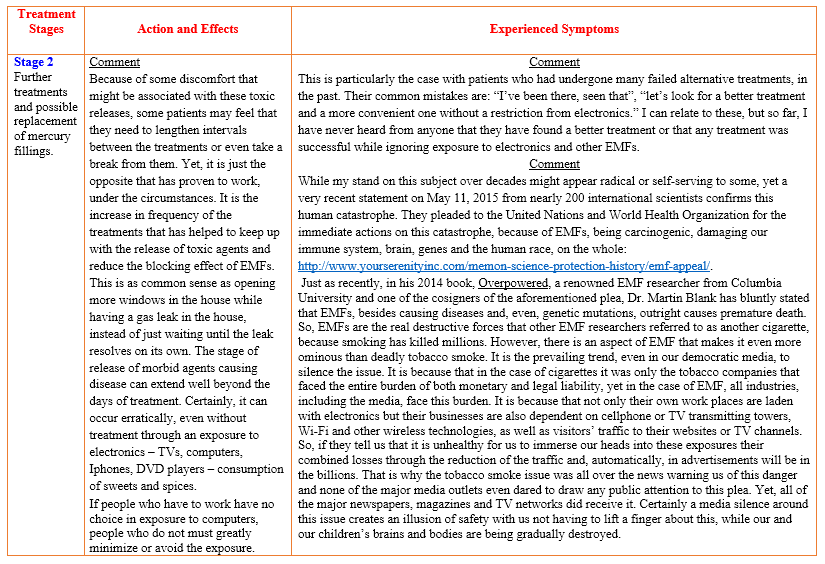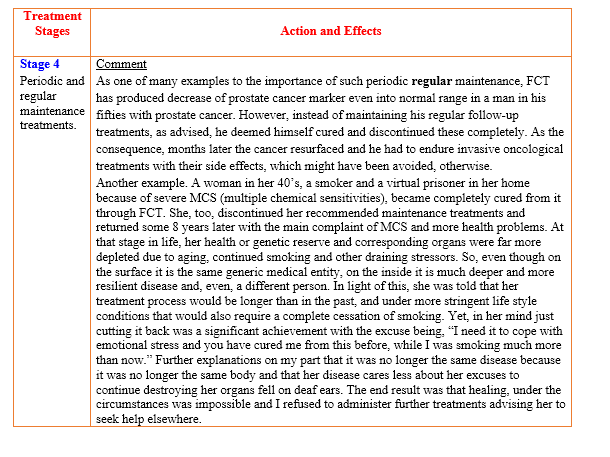In science, whenever one deals with the situations where too many different factors unpredicatably act on a system, which is also highly changeable itself like the human body, no definite predictions can be issued concerning timetables for the completion of work, or recovery in our case. As an example, to answer the question as to whether American girls’ premature puberty is due to toxic chemicals in their bodies, bad diet, excessive weight or all of these, a conventional medical scientist correctly states that a concrete answer is impossible to issue.
“People always want to know the reason, but I don’t think people will ever be able to sort out the reason or the fix. It’s a lot of things interacting together and they have different effects on different individuals.”
This holds true for all chronic diseases where the list of uncertainties is long.
- There is no test to measure, even approximately, the total amounts of causative agents in the body, or their exact combined interactions.
- It is just as impossible to measure those fractions of toxicological agents, and, sometimes antibiotics, which are commonly sequestered by gut microbes, such as Candida species, worms and some bacteria. All of these may release toxicological agents and antibiotics internally and unpredictably. Such unpredictable releases can also take place following intakes of sugar, fruit, alcohol or hot spices, self-supplementations with probiotics, herbs and other agents, or as the result of this or other treatment that can enhance strength and capacity of the immune system to kill these infections on its own.
- There is no 100% reliable test to assure that all possible toxicological and infectious agents have been identified and addressed.
- There is no test to predict an individual’s ability to release the disease causing agents fast, slow or with difficulty nor is there a test to predict the intensity of interactions of these agents with environmental EMF.
However, what we do know that certain scientific studies did indicate such interactions and one of these studies has demonstrated a far higher release of toxic metals in the EMF free environment versus an environment where EMFs were present.
- Likewise, even while bio-resonance testing can detect this blocking effect of or level of sensitivity to EMFs, at this time there is no test to predict the level and susceptibility of a person to such interactions, which may significantly vary from person to person, with or without a treatment. My clinical and bio-resonance testing experience in this regard is fully corroborated by the internationally known researcher of EMFs, from Columbia University, Martin Blank, PhD.
Equally evident from the increasing mass of scientific evidence of the health effects of exposure to low frequency, non-ionizing electromagnetic radiation is that individuals respond differently to different doses of exposure and to different frequencies of EMF. For instance, low levels of ELF [fields emitted by power lines, ordinary electricity] exposure may cause melatonin suppression in some individuals, but not in others. In others, the same level of ELF exposure may be linked to the occurrence of leukemia. We do not know or understand enough at the present time to predict outcomes. We can only demonstrate that these negative health effects are strongly linked…to various types of EMF exposures widely considered to be safe.
It is clear that the health risks from man-made EMF are real, with a wide-ranging impact on people. This is the consensus of a growing number of responsible scientists and professional health-care workers.
With melatonin being the hormone that is necessary for sleep and immunity, he is stating that any unpredictable health problem is possible due to EMFs, from insomnia to cancer.
- There is no way to predict a person’s compliance factor concerning the avoidance or substantial reduction in use of electronics, including phones, adherence to recommended diet and follow-up treatment schedule, or abstaining from self-treatments. Even when some patients tend to believe that their compliance was 100% this is rarely true because they either maintained it only initially for a short time or assumed that just because they have altered their lifestyle to some drastic for them degree this already qualifies as sufficient for following everything ‘to the letter’ and the recovery better be around the corner because of how much we have already ‘sacrificed.’ ‘Sacrificed’ for whose sake? Meanwhile, most of the ‘sacrifice’ constitutes a mere reduction in self-destruction, whether through the favorite habit of consuming sweets or using electronics. Certainly, because of either work or family commitments 100% compliance may not be possible. However, and not to pass the ‘final judgement’ on anyone, but to simply state the well-known to science fact that when in a scientific study all of the important variables or factors cannot be controlled, but unpredictably fluctuate or change no scientist in the world can tell exactly when and how such a study will end.
- Even a length of the disease and age of the patient are not always the most reliable negative or positive factors, as the general rule the longer the disease course or older the person is the longer the treatment takes. Just from recent memory, a woman in her mid-seventies with a chronic disease for more than half of her life, a 40 year duration, has completely recovered from it through this approach, in only six months. Along with it her physical energy and stamina, as well as mental function were completely restored. As the result, she was able to start keeping a 12-hour-a-day work schedule, even without noticing it. On the other hand, a much younger person chronologically can have a body of a much older one, biologically or physiologically.
Likewise, most people presume that their disease is just low thyroid, adrenal or some mitochondrial dysfunction, leaky gut, food allergies, fluoroquinolone toxicity, MTRF gene disorder and hundreds of others, which all need some kind of a corresponding ‘specific’ good regiment and its timing to fix it. However, these names represent only some superficial labels or the tip of the iceberg or a tree top where underneath, there lies a far bigger or total disease. And this total disease is not determined only by some detected findings, but by the totality of the underlying deeper causes.
While in some cases these detected findings may be very important, in others they represent only a fraction or just a cosmetic defect. In my experience, it is only through bio-resonance testing that one can fairly well determine both the true causes and roots of disease behind the surface’s abnormalities, and the true importance and safety of their treatments. Otherwise, hoping that treatments which aims to undo these abnormalities will succeed constitutes an impossible dream.
As one of countless unfortunate examples to this notion, Mrs. J has quit this approach because after only a few treatments she has not seen much difference in her disease and the readings of bio-resonance testing concerning the causes of here illness seemed uncertain, not black and white like lab or x-ray reports. She proceeded with the best of both worlds – conventional and, mainly, alternative treatments – which were based on concrete black and white lab reports. This actual photo below reflects the volume of these concrete test reports.
The treatments were even many more and continuous over some 15 years, by the time she returned. Yet, not only these treatments have failed to solve a single medical problem of hers, but she has acquired over this time many more serious diseases, including even potentially terminal lung cancer.
So, due to all of the aforementioned reasons science cannot speak of its predictions in exact numbers and dates concerning their very complex states, but only in terms of probabilities, likelihoods or optimizations of outcomes. That is why no one can predict exactly the course of the stock market or its individual stocks, or forecast the weather beyond a few days even using the most advanced computers and satellites. For the same reasons, no treatment can predict any “sure” results or the exact timing of significant progress. It can only predict a greater tendency toward optimization of positive or negative outcomes, depending on the circumstances. Certainly, incapable treatments are doomed to fail, anyway, no matter how long of a time, perfect diet and environment or compliance might be the case. Below is a table that offers a brief summary concerning the main factors, which influence the tendency toward complete or incomplete recoveries or, in some instances, failure in the process of receiving a sound treatment.
Table #1. Optimizations and their tendencies in chronic diseases


Table #2. Typical trends in Responses to this Treatment under Proper Compliance, and their Suggested Underlying Mechanisms and Effects

Additional comments below targeting only Stage 2 and Stage 4.
Unfortunately and naturally, due the very complex and unpredictable interaction of the aforementioned interplay of so many different factors involved in both disease and the treatment process, one cannot exactly predict the length of the presented stages. While there is a natural expectation on our part to be given some rough estimates for the completion of our body’s repair process, as we expect with a broken car, the latter is governed by completely different conditions of repair. A car remains still or immobile by sitting on a lift in a garage where a mechanic works on its broken parts until day x, y or z when he fixes it, such a work luxury is inapplicable to human bodies for many reasons. Among these, our broken parts are interconnected with and interdependent on many other parts in the body which can also be broken, semi-broken or, still healthy, all depending on an individual person. Also unlike a broken car remaining in a fixed or controlled setting in a garage that spares it from further use or abuse, human bodies are on the “road” 24/7, even in a hospital bed. This is because as we breath, eat, think, e.g., worry, are exposed to environmental pollutants, EMFs, germs, treatments, and depletion of repair mechanisms by the aging, with all of these at play, leading to unpredictable effects. Some of these factors might be of a positive nature, too such as diet, cleaner environment, positive emotions, or proper compliance. For each person the combination of some of these positive and negative influences is always unique, that includes an individual sensitivity to these, accordingly. As an example, a statement that sounds as impressive to that person: “Doctor, I have reduced my computer, TV or phone use from three hours to one,” or “cookies from 5 to 2”, may not mean anything to one’s broken parts, because these simply still remain very sensitive to reduced negative impacts. Here is the quote from a patient who has already significantly reduced her exposure to electronics: “When I am using the computer I feel pressure and fullness in my thyroid gland and my neck glands become swollen.” Another patient: “Shortly after I eat sweets I feel drained.” They report feeling the harm and can relate to it. Yet, others may not feel it right away and, still, continue damaging their broken parts.The bottom line is that while on the treatment things are far from being a car being fixed in a mechanic shop.



